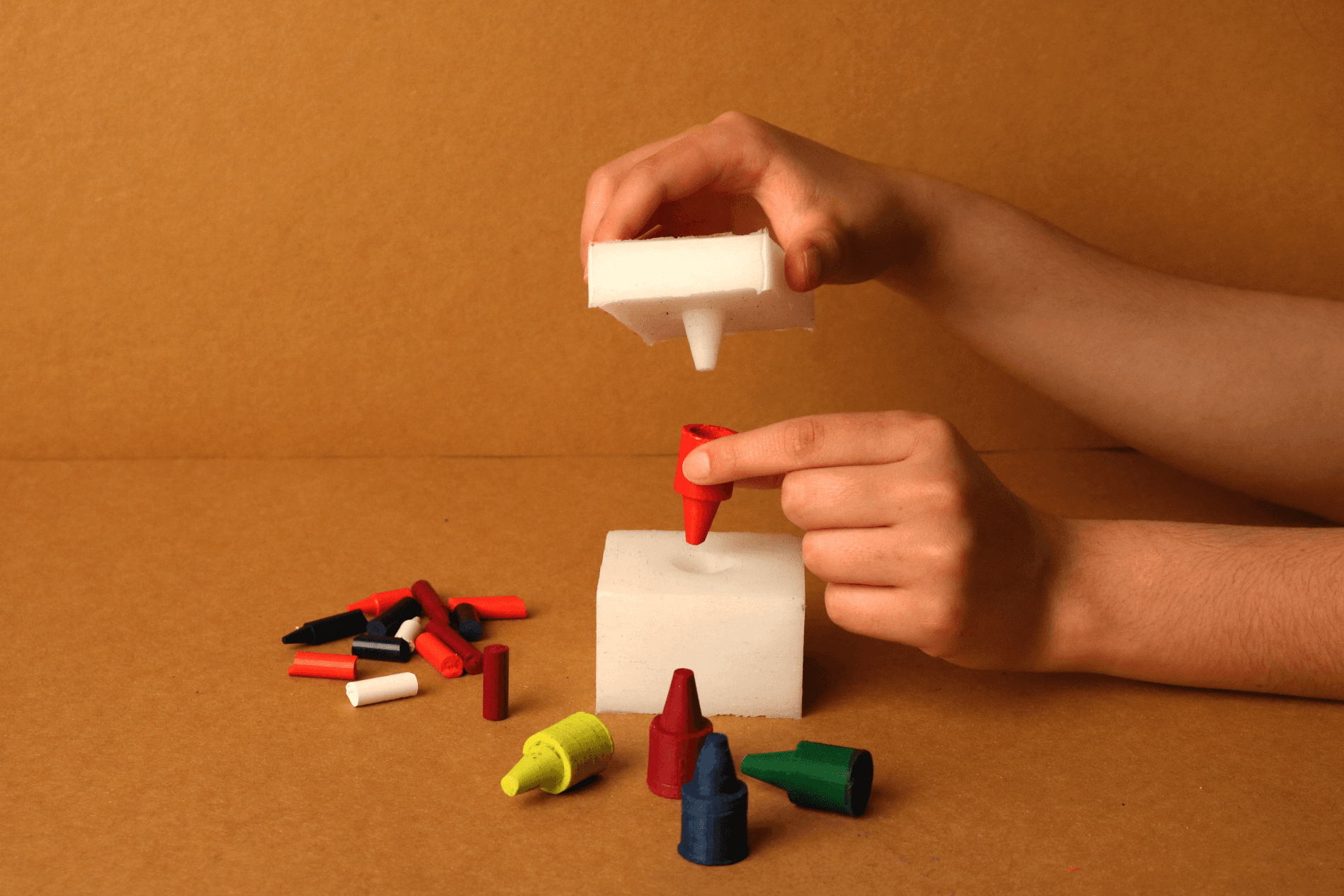Product design · 3D modeling · User research · Visual Identity
Loop
Loop
Loop
Circular learning through creative play
Circular learning through creative play
Circular learning through creative play



The Challenge
Address the escalating environmental crisis by creating a product that promotes sustainable practices in our daily lives. Specifically, the focus was on tackling the issue of waste through education, targeting the next generation.
Address the escalating environmental crisis by creating a product that promotes sustainable practices in our daily lives. Specifically, the focus was on tackling the issue of waste through education, targeting the next generation.
Address the escalating environmental crisis by creating a product that promotes sustainable practices in our daily lives. Specifically, the focus was on tackling the issue of waste through education, targeting the next generation.



Solution
Extensive research was conducted on the target users, which were determined to be children between the ages of 7 and 11. Understanding their cognitive development stages, such as conservation and logical thinking, helped in identifying the context in which the solution would be applied. The specific aim focus was on school supply waste, recognizing the potential impact of circular design.
The opportunity identified was to produce new school supplies from old ones by integrating circularity. The project brief was to integrate the circular system into kids' everyday lives through the redesign of creative experimentation.
Extensive research was conducted on the target users, which were determined to be children between the ages of 7 and 11. Understanding their cognitive development stages, such as conservation and logical thinking, helped in identifying the context in which the solution would be applied. The specific aim focus was on school supply waste, recognizing the potential impact of circular design.
The opportunity identified was to produce new school supplies from old ones by integrating circularity. The project brief was to integrate the circular system into kids' everyday lives through the redesign of creative experimentation.
Extensive research was conducted on the target users, which were determined to be children between the ages of 7 and 11. Understanding their cognitive development stages, such as conservation and logical thinking, helped in identifying the context in which the solution would be applied. The specific aim focus was on school supply waste, recognizing the potential impact of circular design.
The opportunity identified was to produce new school supplies from old ones by integrating circularity. The project brief was to integrate the circular system into kids' everyday lives through the redesign of creative experimentation.



Approach
Brainstorming sessions and sketching ideas led to the exploration of various design approaches. The main concepts considered were instant feedback and gamifying good habits. This led to the final idea of using instant circular processes to make new pencils and crayons from old and discarded ones.
Prototyping was then carried out, considering materiality, durability, and the interaction of the kids with the prototypes.
To enhance communication and representation of the concept, the project was given a brand identity and name: Loop.
Brainstorming sessions and sketching ideas led to the exploration of various design approaches. The main concepts considered were instant feedback and gamifying good habits. This led to the final idea of using instant circular processes to make new pencils and crayons from old and discarded ones.
Prototyping was then carried out, considering materiality, durability, and the interaction of the kids with the prototypes.
To enhance communication and representation of the concept, the project was given a brand identity and name: Loop.
Brainstorming sessions and sketching ideas led to the exploration of various design approaches. The main concepts considered were instant feedback and gamifying good habits. This led to the final idea of using instant circular processes to make new pencils and crayons from old and discarded ones.
Prototyping was then carried out, considering materiality, durability, and the interaction of the kids with the prototypes.
To enhance communication and representation of the concept, the project was given a brand identity and name: Loop.






Contact
Get to know more about me
Contact
Get to know more about me
Contact